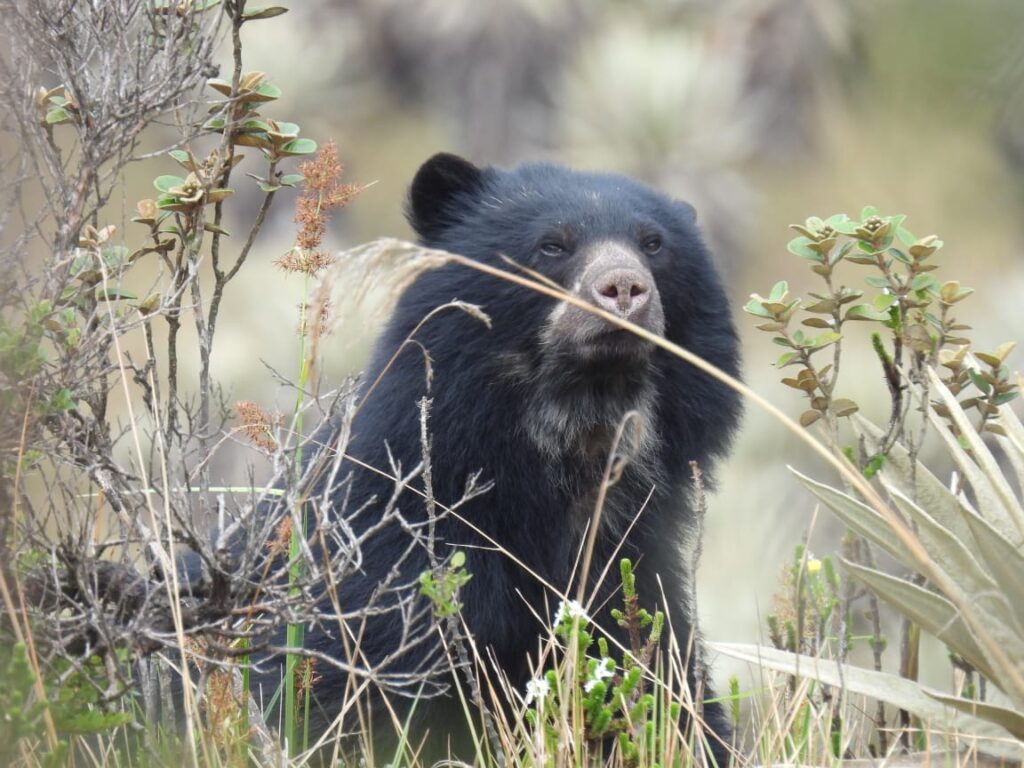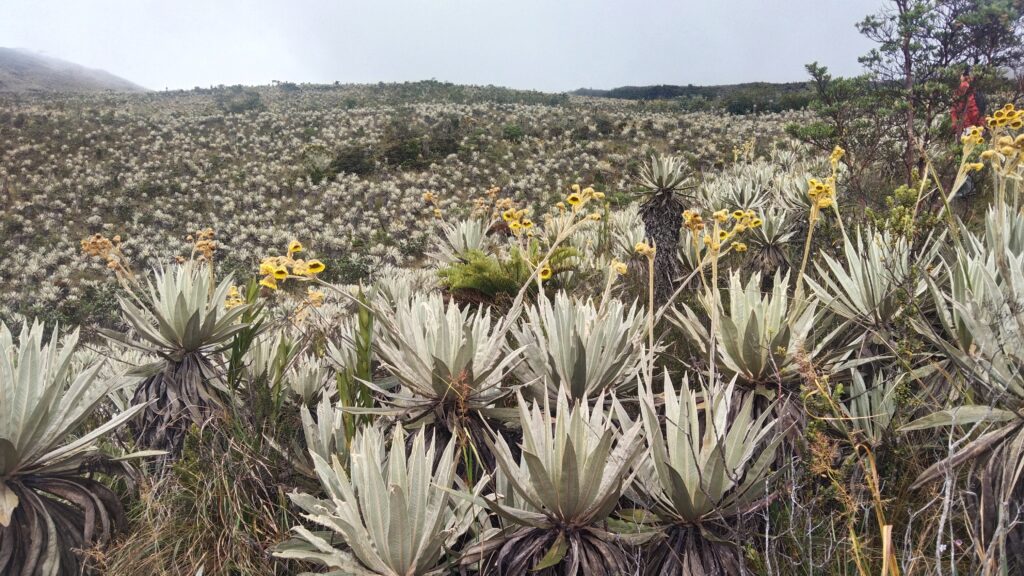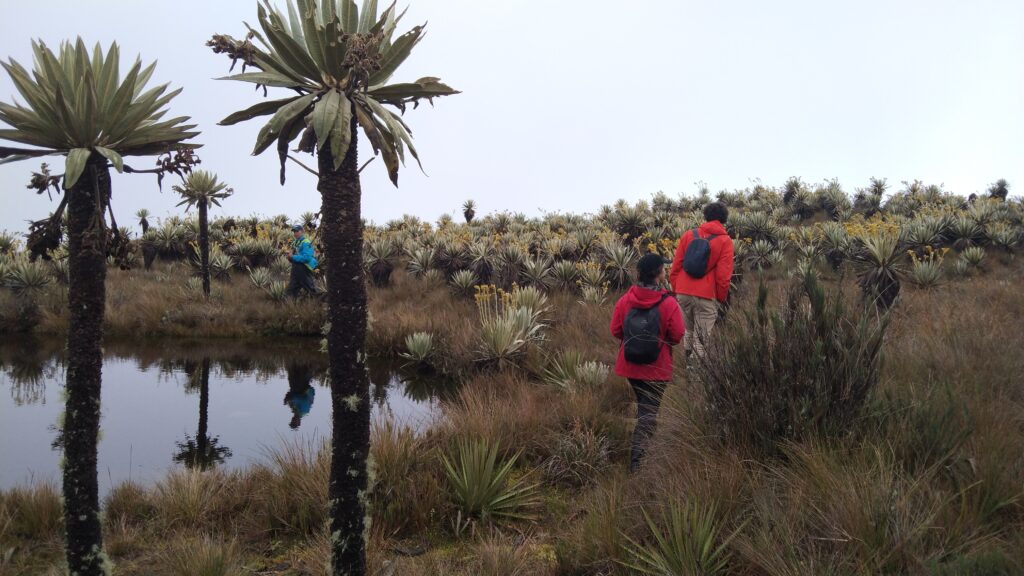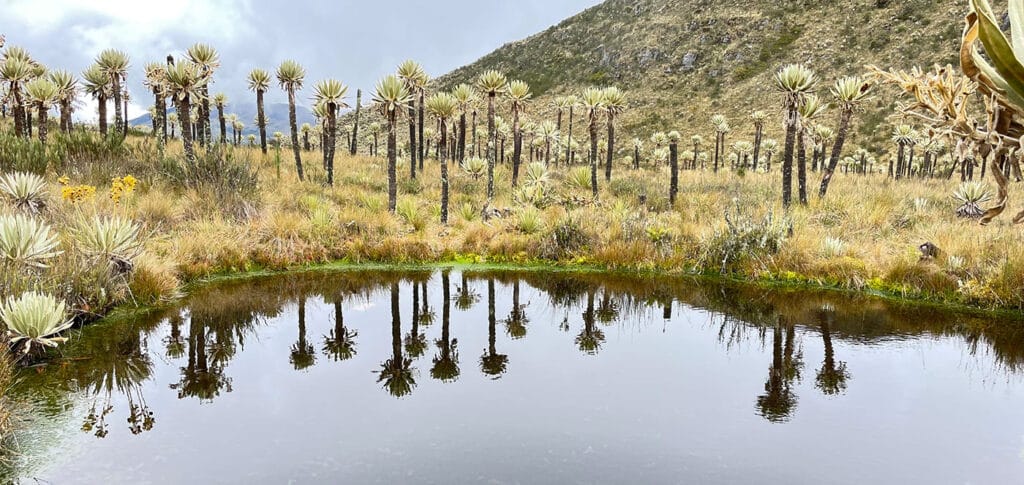The tourism project that bets on moorland conservation
This initiative combines environmental conservation with the active participation of local communities, promoting education on the biodiversity of páramo ecosystems.
Note from El Espectador newspaper
The tourism project that bets on moorland conservation | EL ESPECTADOR
BOOK CALI VIBRANT, OCT 2024

Photo: Hernando Ríos
One of these actions that seeks to make tourism more visible as an agent of change is the Book Cali is where you belonga guide created by the Mayor's Office of Cali that highlights the capital of Valle del Cauca as a world-class tourist destination in the context of COP16. This publication not only showcases the city's unique charms, but also celebrates Colombia's extraordinary diversity, and seeks to spark the interest of conference attendees as well as future visitors.
In it, travelers will find everything from practical tips to an immersion in Cali's renowned gastronomy. In addition, they will be able to see a special section called "Regenerative Tourism", an initiative promoted by the Secretariat of Tourism of Cali and USAID's Destination Nature Program, which promotes nature tourism as one of the main activities of the city, actively contributing to the conservation of local biodiversity. All the projects that can be seen here were chosen after going through a rigorous selection process that evaluated 89 proposals. From there, 17 tourism enterprises were distinguished as demonstrating an exceptional commitment to sustainability and environmental regeneration, setting a precedent in responsible tourism.
And one of the outstanding projects is Explora Verde, a travel agency specialized in nature tourism, adventure and regenerative experiences, which operates mainly in Cundinamarca and offers unique experiences both in Colombia and in international destinations.
"The COP has made a significant impact by unifying the voice of an entire country and awakening a critical awareness among tourism operators about conservation and biodiversity. In this context, the concept of regenerative tourism has emerged as a central theme, although many still do not fully understand its meaning. The presence of this term in the media and public discussions is motivating people to investigate and deepen their understanding of its meaning, which could translate into its genuine incorporation into tourism package offerings," says Claudia Botero, founder and tourism product designer of Explora Verde.
Here, they want tourism to be based on respect for nature and commitment to local communities. This is why they specialize in creating experiences for hikers, birdwatchers, cyclists and travelers interested in connecting with the customs and traditional crafts of local communities.
"For the past seven years, we have established our operations base in Choachí and have carried out significant work in the research and recovery of ancestral roads, especially those traveled by the Muisca and Guayupes communities of the plains foothills. In fact, one of our flagship products is the 'Gran Recorrido Andino', a 7 to 8 day journey that connects rural Bogotá with the plains foothills. This tour is divided into three segments, especially the 'From Paramo to Paramo' route, which goes from the Paramo de Cruz Verde to the Paramo de Chingaza," says Botero.
During the journey, the Muisca cosmogony and their cultural legacy are shared with travelers, as well as the importance of the moorlands in the water cycle. In addition, we seek to establish a connection with the local communities, who offer lodging, food and transportation services. This approach not only revitalizes the indigenous beliefs of the area, but also allows travelers and the natural environment to mutually benefit, promoting the conservation of the territory and the valuation of the mountains, waters and cultural heritage.
What is the route with which you will participate in COP16?
"We present "From Páramo to Páramo".It is a very outstanding route among our products, receiving a special mention in the category of Charming Territories in the ProColombia 2022 tourism awards. This recognition validates our commitment to quality standards in tourism, backed by a tourism model that genuinely integrates local communities under a regenerative approach," says Botero.

The route, which is adapted for COP16 attendees to be a two-day format experience, begins with a transfer from Bogota, departing from the Guadalupe sector, to the Cruz Verde Paramo. In this first encounter with the paramo ecosystem, travelers are welcomed at an ecological conservation park, where, while enjoying an authentic peasant snack, they receive a detailed introduction to the territory and the vital importance of the paramos. Then, they are taken on a tour to the sacred lagoons of the Muiscas, where the secrets of this unique ecosystem are revealed, explaining the functioning of most of the species present.
On the second day, a 4×4 transfer is made to the Maza Fonté Private Reserve, located in the heart of the Chingaza Paramo. Here, travelers have the opportunity to deepen their knowledge of this ecosystem and observe the impressive endemic frailejones, some of which reach heights of up to 12 meters. According to Botero, with each step they take, tourists contribute to the cultivation of water in the páramos and the strengthening of biological corridors for endangered fauna, especially the emblematic Andean bear.
"Paramos are predominant ecosystems in Colombia, Ecuador and Venezuela due to the Andes Mountains. Their relevance is due to their fundamental role in the regulation of the hydrological cycle, being essential for the supply of drinking water and the development of sustainable economic activities. In this context, Choachí stands out as a tourist destination with great potential, as this municipality, unique in its kind, has two moorlands in its territory, a rare feature among other Colombian municipalities. In addition, the moors have an important ancestral legacy, which is why they can be an emerging and attractive destination for ecotourism and the exploration of Andean biodiversity," says the expert.
However, regenerative tourism, although increasingly recognized, faces significant challenges in rural areas, especially in the páramos. Among the main challenges are invasive tourism, unregulated agricultural and livestock expansion, and climate change. Fortunately, according to Botero, local communities have developed a remarkable conservation awareness, and private reserves have implemented basic infrastructure to receive visitors.

However, the conservation of the páramos presents its own specific challenges, so it is essential to educate visitors about the role of these ecosystems as "water growers" and their importance to the local communities that depend on these water resources.
On the other hand, another challenge remains the effective promotion of these destinations to ensure their long-term economic sustainability, as a crucial aspect is to ensure the economic viability of conservation initiatives.
"Many landowners have made the courageous decision to transform their lands, traditionally dedicated to agriculture or cattle ranching, into private reserves. The challenge is to maintain a steady flow of visitors that generates sufficient income for these families, motivating them to persist in their commitment to conservation. As a travel agency, the challenge is to balance the promotion of these destinations while scrupulously respecting the carrying capacity, working with small groups that minimize environmental impact," says the expert.
He mentions that, if effective conservation of the páramos is achieved, the protection of these fundamental ecosystems can be assured in the long term. A notable example of this recovery is the reappearance of the Andean bear, an emblematic species that symbolizes the success of restoration efforts in some páramo areas. This is why, according to Botero, the key to meeting these challenges lies in ongoing environmental education, both for visitors and local communities.
"Only through a deep understanding of the value of these ecosystems and the importance of their conservation will it be possible to achieve effective protection of biodiversity, while developing a model of regenerative tourism that benefits all stakeholders. I believe that the visibility that events of international stature can give to this region represents an invaluable opportunity, not so much for the benefit of individual operators, but to position the entire territory as a nature destination par excellence".concludes the expert.



